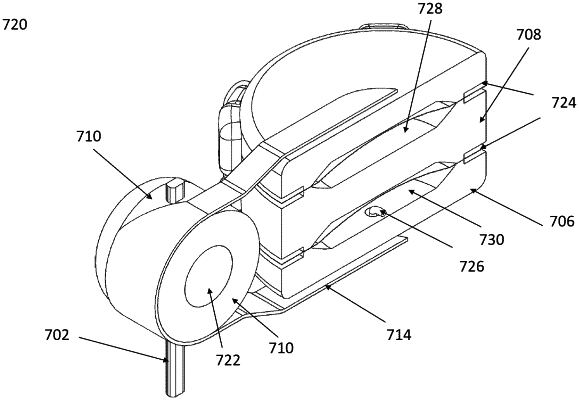| CPC A61M 5/14276 (2013.01) [A61M 5/14224 (2013.01); A61M 31/002 (2013.01); A61M 2205/0272 (2013.01); A61M 2205/3327 (2013.01); A61M 2205/50 (2013.01)] | 19 Claims |

|
1. A bidirectional pump for medical implants, comprising:
an electroosmotic element housing comprising:
an electroosmotic element; and
one or more electrodes which pass through the electroosmotic element;
a bellows assembly comprising:
a bellows housing;
two or more bellows within the bellows housing;
one or more bellows sensors within the bellows housing; and
a payload fluid which can be dispensed based on movement of the two or more bellows; and
a connector which allows for movement of a working fluid from the electroosmotic element housing to the bellows assembly and back from the bellows assembly to the electroosmotic element housing based on an electrical current being applied to the one or more electrodes.
|
|
11. A method for delivering fluid through an implanted medical device, comprising:
moving a working fluid from an electroosmotic element housing to a bellows assembly by applying a first polarity electric current to an electroosmotic element through one or more electrodes which pass through the electroosmotic element;
sensing deformation of a bellows caused by the movement of the working fluid from the electroosmotic element housing to the bellows assembly via one or more bellows sensors within a bellows housing contained in the bellows assembly;
moving the working fluid from the bellows assembly to the electroosmotic element housing by applying an opposite polarity electric current to the one or more electrodes after detecting the deformation of the bellows;
moving the working fluid in a reciprocating fluid fashion by periodically repeating the applying of the first polarity electric current and the opposite polarity electric current to the one or more electrodes; and
dispensing a payload fluid by the deformation of the bellows caused by the reciprocating fluid motion of the working fluid.
|